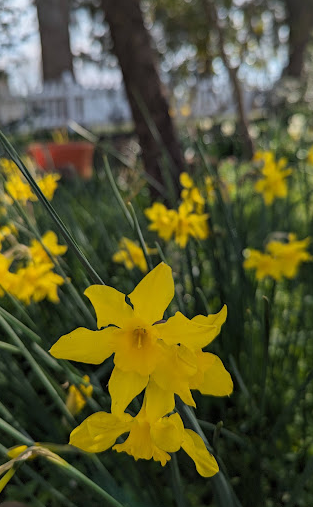Discovering Toad Lilies
- Clifford Brock
- Sep 28, 2022
- 2 min read
I must remind myself that not all people think toads are cute. I see them as little chubby hopping things that eat slugs and other pests. Regardless of your feelings toward frogs and toads, you definitely want them in your garden.
Toad lilies are just as divisive... you either adore them or ignore them. But they bloom in the autumn, which makes them an essential addition to my garden.

Like its amphibian namesake, these lilies grow best in damp shady gardens and the flowers have a bumpy or "reptilian" veneer. The genus name, Tricyrtis roughly translates to"3 bumps", referring to the raised wart-like nectaries at the base of the flower.
All toad lilies are native to eastern Asia, and we have no native species here. Yet because of our similar climate, we can grow most of the species. Though the yellow-flowered species, like T. flava, ohsumiensis, perfoliata, and macranthra would probably do best in a slightly cooler climate with more summer moisture, say in the southern Appalachians.

While there are many cultivars, my experience with toad lilies is quite limited. I've had T. hirta, or hairy toad lily the longest. It has persisted in my mom's yard for at least 15 years with little to no care. Though it wilts profusely in the slightest drought, it has proven resilient and has grown into a 3-foot-wide patch of many stems bursting into flower in late September. I almost never remember to water my toad lilies, so you know they have to be tough!
In the last year, I've taken an interest in building my toad lily collection. T. lasiocarpa, or what I suspect is, has done quite well so far. According to Plant Delights, this species is probably best suited to the hot south and can even grow in full sun. I'm also experimenting with a hybrid between the yellow Tricyrtis perfoliata and Tricyrtis hirta named 'Amanogawa'. Though perhaps not as vigorous as other hybrids, it has nevertheless survived this last summer. If you start growing them, you might discover your very own seedings, as toad lilies produce many tiny papery seeds.

Most people aren't blown away by toad lilies. They don't elicit a dramatic response as say an Oriental lily or even a Trillium, yet their delicate and unusual appearance offers a nice surprise to whoever is willing to notice. Toad lilies are the perfect pass-along plants because they multiply, yet they never become out-of-control like so many other stoloniferous perennials.
For a more comprehensive write-up on the history, horticulture, and taxonomy of this amazing genus, please consult the document below from the folks at Plant Delights:




Comments